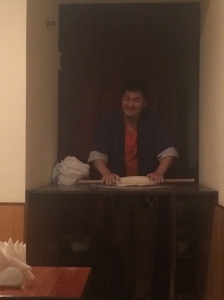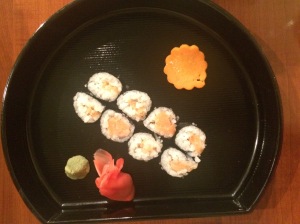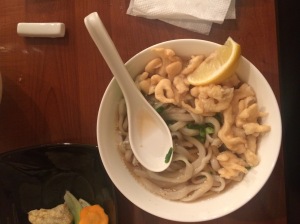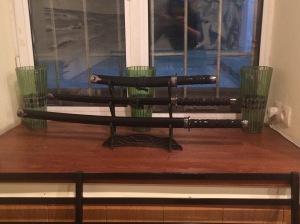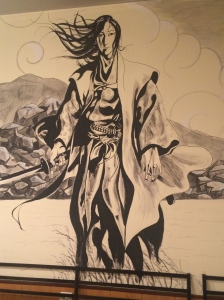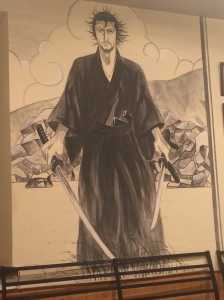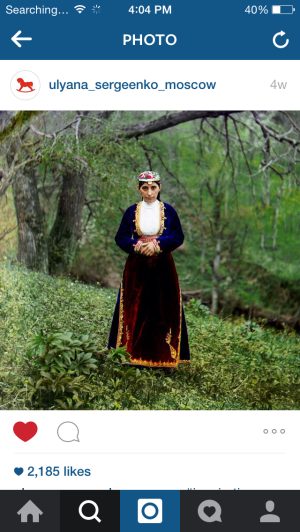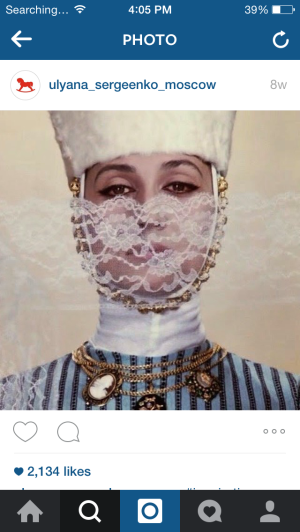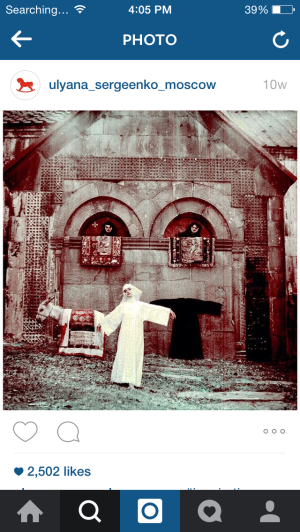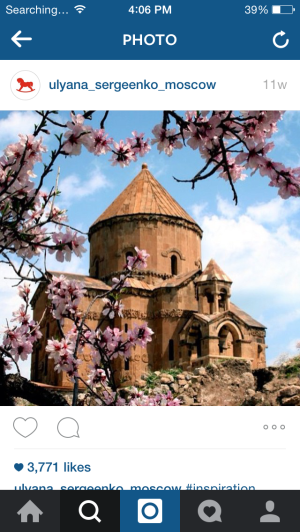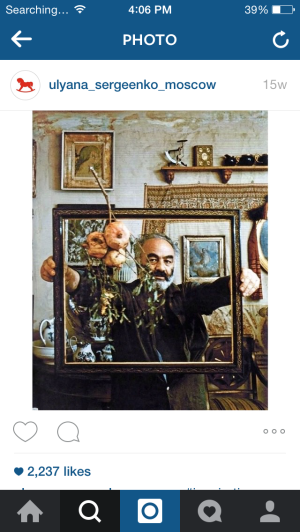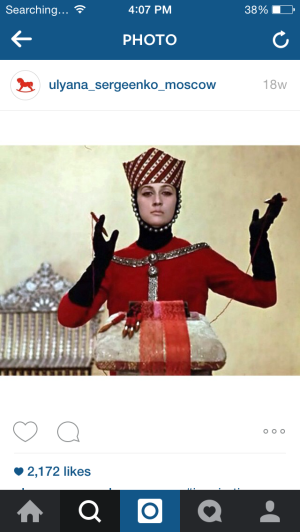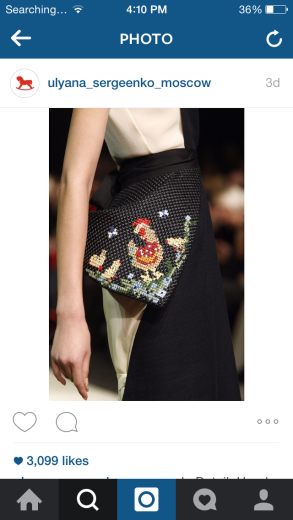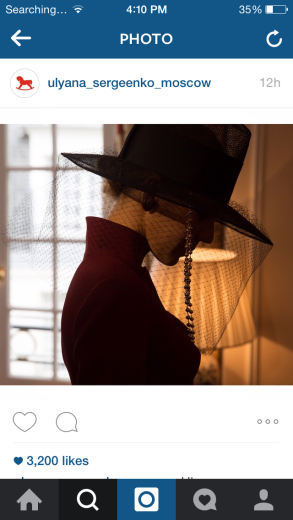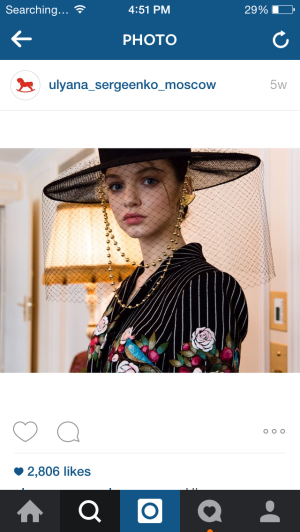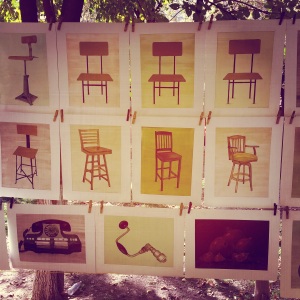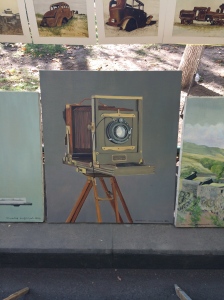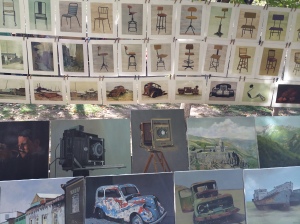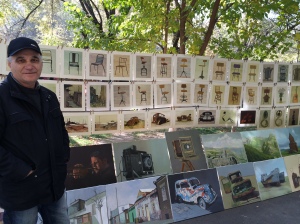This April 24th, I was especially irked by a certain trend. (It’s not a particularly new trend, it’s more that I’m just particularly slow to notice things.)
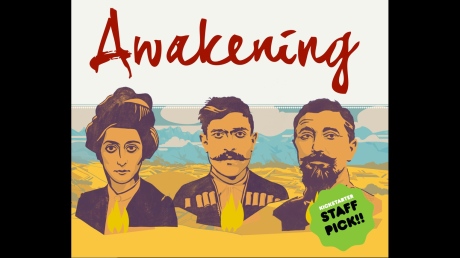
I’ve been working on this post for months. I’ve written and re-written it dozens of times. I just couldn’t figure out how to write about Malkhas’s Zartonk in an appropriate way. I long ago scrapped my “Knock knock. Who’s there? Malkhas. Malkhas who? Malkhas’s 4-volume story about Armenian national awakening!” introduction. I intended to give up altogether with a self-satisfying “I tried,” but then I realized that not enough people were talking about this book and I have feeble hopes that this little post could spur on more reading and discussion. (WordPress analytics tells me there’s one person in Germany who reads this blog, so maybe it’ll help them.) Fingers crossed.
Malkhas’s 4-volume “Zartonk” is an amazing feat of writing that should be obligatory for anyone interested in modern Armenian history or badass people who took their fate into their own hands. Thankfully, due to the tireless efforts of the Sosé and Allen Foundation and their team, the work has been translated to English. So now you, my dear reader, have no excuse.
Clocking in at 1691 pages, the books cover the Zartonk period (wait a second, that’s also the name of the book…), what led to it and what came as a result of it. And if you’re thinking, hey, what’s this Zartonk thing you keep talking about? I’ll explain. The Zartonk period is considered the time of the “awakening” of Armenian national consciousness (literally, “zartonk” translates to “awakening.”) See, after years and years of living under oppressive foreign rule, many Armenians had grown used to it. There was a whole big keep your head low, don’t make too much noise and stay out of trouble type thing going on. Problem was, this didn’t help anything and Armenians were still getting oppressed/killed in their own homes. Just the youzh. Then a bunch of young people went to school abroad and got crazy notions of egalitarianism and liberty stuck in their heads. They brought it back to their hometowns and started spreading the idea that Armenians should defend themselves and you know, not be killed in their own homes. These ideas were spread by rockstar intellectuals and literary figures like Khachatur Abovian and Raffi. It slowly trickled down and people started catching on. This was a big deal. (I cannot exaggerate that. Or else I would. Because I love exaggerations.)
But Zartonk is no history book. Malkhas gives the reader an invaluable look at what was going on in various Armenian communities, through a gripping story; a story filled with dozens of characters that, I warn you, you will get inordinately attached to. Therein lies the beauty of this book: its characters. You find yourself constantly amazed at Levon’s bravery, charmed by Vaheh’s everything and taken with Sonya’s dignity. And then there’s Lion Kevo, sweet, beautiful Lion Kevo. In summary, there is no dearth of characters to become attached to. And I will also warn you that no one is safe. This story takes place, after all, during a time of pogroms, revolution and genocide. (This is pretty much the original Game of Thrones, but less incesty.) I lost track of how many times I laid in the fetal position crying whilst reading. It’s just that good.
The story starts with the rumblings of revolutionary thought permeating throughout the Armenian communities. You see the different types of Armenians and their relationships with their identity. There are the young people who are just discovering these revolutionary thoughts and writings and the all but assimilated Armenians with altered last names who are too comfortable to be bothered by pesky notions of defense. The first volume was my personal fave. Not because the rest aren’t ridiculously good as well, but because you see so many parallels to contemporary diasporan communities and you wonder if we have learned anything really. (And then you get sad thinking about that. And then you eat Tamara ice cream in hopes that you won’t be sad again. But delicious made-in-Armenia marojni can only get you so far.)
As the story progresses and you follow these characters, you also see just how utterly insane every act of rebellion was. Like, really insane. Like, these people had no hopes but they fought anyway type of insane. (I read some guy throw around the word khent. Seems appropriate.) And then once you realize that these stories are based on real events (the author himself took part) you begin to slowly understand how what you are reading is truly amazing. The author does not stick to feel-good stereotypes either. The people are complex. They commit acts based off fear, courage, love, dedication, self-interest and deceit. (At 1691 pages, you bet it runs the gamut of human behavior.)
Do not be daunted by the number of pages. I guarantee you will speed through it. Everyone I know who has read it has had the same experience. This book is meant to be read by anyone who:
- Wants to get a glimpse of how Armenians lived prior to the Genocide
- Wants a better understanding of Armenian communities
- Wants to know the mentality of different types of fedayees/azadamardeegs
- Wants insight as to why Armenians are they way that they are today
- Wants me to stop using simplistic lists to get my point across
In toto, I highly recommend this read to anyone looking for a better understanding of the time as well as a source of infinite and beautiful inspiration. I’ll just leave this right here: http://www.sardarabad.org/awakening.aspx
(For all my Yerevan peoples, the book is also sold at Art Bridge.)
(Little mood music while you’re reading)
“Inexperienced, unarmed youth, refugees, even women and girls, without regard to class or faction, manned positions alongside the volunteer soldiers who for years had won their laurels on battlefields. All of them heroically confronted the assaults of the enemy’s regular armies.
The Republic of Armenia was born of the sacred Armenian blood spilled in abundance on the plain of Ararat.
Finally, the centuries-old dream of Armenians became reality. An independent homeland, on a portion of the historic lands of our forefathers. A preliminary step toward integral, united Armenia.
The Armenian people took in a deep breath of consolation, seeing the name of Armenia recorded – even if in small print – in a corner of the world map.”
-Alexander Khatisian, 19381
When you think of the perks of studying history, your first thought is probably, “Boy, I bet those guys get invited to all the awesome parties.” Well, obvs, that’s true. (Can’t tell you how many times I’ve had to say, “Sorry, Giselle. I can’t make it this weekend but hugs and kisses to Tom and the kids!”) But besides the life of opulence historians lead, we also have the tendency to look at things in the long-term and place current events into a much broader spectrum. In that sense, it’s hard to scare a historian (unless you place me outside at nighttime, in which case, you will terrify this historian). How can you feel daunted at the task of, say, branding Armenia for global consumption when you think of the massive rebranding that went into converting the Armenian people to Christianity? What this outlook tends to do is also put a lot of things others may take for granted into a really exciting context.
September 21st is Armenia’s independence day. On this day, in 1991, “the Armenian parliament by a vote of 213 to 0 declared a sovereign state and seceded from the Soviet Union and two days later, on September 23, Armenia declared its independence. A new Armenian Republic was born.”2 What happened on September 21 was not easy. But as difficult as September 21, 1991 must have been, the real hard part started September 22, 1991 which was building a successful nation.
Now, I know what some of you are thinking. “Do I really need to go the next level and interact with Armenia if I’m doing my part within my community?” With that question, the bespectacled, high-bunned historian in me wants to grab those people by their well-meaning shoulders and shake them mildly while politely exclaiming, “Your community role is vital but so is you connection to Armenia, new friend!”
Figure out what your role is and get on it. Interested in IT? Start a business. Want to help people? Create a kick-ass nonprofit. Gap year? Volunteer. Professional looking to put your experience to use? Volunteer here. Love working with young people? Do it. Passionate about something? Make a career out of it. Have a free summer you want to spend in Armenia? Lucky you. Just graduated high school? Enroll. Tired of talking about being a part of Armenia? Move here. Do something.
I know that I’ve put a pretty big task in front of you. But, just think like a historian and you’ll be fine. Remember, figuring out how to engage with Armenia can’t be much worse than what Trdat III had to get away with. “Everyone…everyone I’m going to need you to put down those pagan statuettes, destroy those Zoroastrian temples and exit the Hellenic ritual sites you’ve been used to for centuries and adopt this entirely new and foreign concept based off the fact that it’s what saved me from living the rest of my life as a wild boar. Good? Good.” Comparatively, what we have to do is cake.
Happy Independence Day, Armenia. To many, many more.
- Voices from the Past: Excerpts from the writings of Armenian Revolutionaries translated by Vahe Habeshian (Awesome book for anyone who wants to get a quick introduction to some of Armenia’s past intellectuals and soldiers.)
- A Concise History of the Armenian People by George A. Bournoutian (If the quote doesn’t pique your interest, the book itself is tricolor themed so if for no other reason, buy it for that.)
While the prudent stand and ponder, the fool has already crossed the river.
–Raffi, “The Fool”
In 1880, Raffi (Hakob Melik Hakobian) wrote “Khent” (The Fool). The titular character is exasperated with the way the majority of his fellow Armenians act and think and thus acts and thinks in a way that many regard as foolish…
After sitting at a crowded cafe, spontaneously seeing some wonderful people who moved to Armenia long before me, I decided it was appropriate to celebrate the people who had the foresight to do what some (read: most) consider “foolish.”
To the fools who came to Armenia in the 40’s. The place may not have been what you were expecting, but you uprooted your entire life and started anew based on your love for your country.
To the fools who moved to Armenia right after 1991. Not only did you create a path for many to follow now, but you chose to live in a world without avocados for many years.
To the fools who voluntarily stayed after 1991. Your offspring is amazing and because of you, they believe in the future and are establishing a foundation to build on.
To the fools who came to build and never uttered the dreaded words “help,” “third-world,” or “charity.” You have come to terms with the fact that you do not deserve a ticker-tape parade or applause and are the ones who are starting a new, sustainable dynamic.
To the two fools from California who went to Armenia to start a life here. He with a love for i-anything and she with a love for anything witty and clever, you have become inspiration for countless others and continue to be so through your legacy.
To the fools who believe, really believe, in the intense awesomeness that is possible in this country. Understand that you are the reason that intense awesomeness is/will be coming to fruition.
And to the fools sitting far away, reading this at their computers, not giving into the naysayers bombarding them with their pedestrian platitudes but who are still vacillating about whether to join their fellow fools. Know that though you will not get a pat on the back, you can now find avocados, that many have come before you and that crossing the river isn’t so bad.
Armenia is known for many things including a staggeringly impressive cultural and intellectual history; the ability to survive genocide, pogroms and other cornucopia of systematic attempts at ethnic cleansing and something about Christianity…but, believe it or not, authentic Japanese cuisine is not on this list.
Enter Yuji.
Over a year ago, Yuji visited Armenia and he liked it. Later, he was told that there was a dearth of quality, authentic Japanese food in Yerevan and that Armenia had favorable conditions to open a restaurant. So he came to Armenia and opened a restaurant.
Sakurada, located at the hip intersection of Tumanyan and Nalbandyan, is where Yuji creates his gastronomic masterpieces. The menu includes an assortment of sushi selections as well as udon, tempura and other culinary creations along with hot or cold sake and Asahi Beer(!) And it is all darn tasty.
But besides the fact that the food itself is delectable, Yuji and his staff have cultivated a friendly and warm environment. The place is just pleasant to be in. The walls have been painted (by Yuji’s local Armenian friends) with traditional Japanese motifs and the staff are dressed in kimonos (from the Greek word…hah, jk).
At the end, it is just another example of that age-old story of the Japanese chef who comes to Armenia with hopes of making a sushi restaurant successful…so, if you are in the area (and I know about half the Armenian world is in the area right now), “roll” on by and try it out.
When you think epicenters of fashion, you think New York, Paris, Milan.
Well, it looks like everyone’s favorite cradle of civilization is quickly demonstrating that it is no slouch in the couture department itself. Allow me to break it down a bit.
As I’ve written already, Yerevan has a burgeoning street style scene with young, fierce women struttin’ their diverse stuff all over gentron. Women are slowly eschewing traditional ideas of how one should dress and are expressing their individuality and creative instincts. Then theres Fashion Week. Yerevan Fashion Week showcased the collections from various local designers as well as designers from abroad. The event is intended to take place annually and the organizers noted that they were surprised with how well the event was received commenting “people need something beautiful, fashion, new ideas and inspiration.” The goal is to eventually make Armenia the regional center for the fashion industry. If that’s not awesome enough, just wait!
Yerevan is also home to Vahan Khachatryan. After studying fashion in Italy, Khachatryan worked for Dolce and Gabbana (omg) before starting his own couture line. Showing clear influences from his D & G days, Khachatryan’s designs are deliciously over the top and baroque (I may or may not have written this entire post just to be able to use the word ‘baroque’ in a non-Art history-related sentence.) Combining elements of classical Armenian motifs with that modern flavor has made Khachatryan’s work unique and exciting. Please admire below:
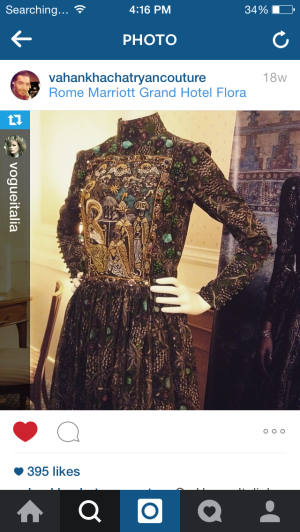
Aside from producing new designers and ideas in the world of fashion, Armenia and Armenian culture is also a muse for the goddess that is Ulyana Sergeenko.
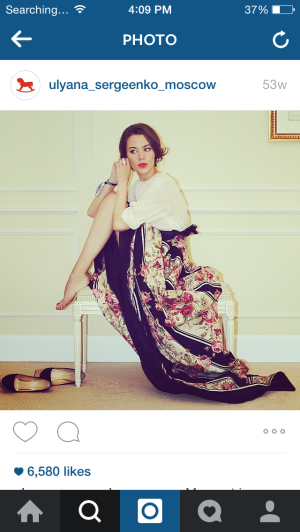
Born in Kazakhstan, Sergeenko is rapidly moving up the ladder of fashion elite for her delicate, ultra-feminine, Soviet-inspired beauties. And through it all, she frequently points to Armenia as a source of inspirations. Using this:
to create the pieces that occupy my dreams, like this:
Armenian motifs and fashion are getting an update and it is all kinds of awesome. I’m looking forward to the day that Yerevan will be mentioned in the same breath as New York, Paris and Milan. In the meantime, I’ll start prepping my OOTD.
Happy New Years! I know I’m a little late on the resolution thing but you know what I always say – better make lofty goals that are almost impossible to keep for 365 days late than never.
So, after living a year as a person born and raised in California who lived her life in a very strong Diasporan community (OC represent) and who then decided to up and move to the place we always talk about, I’ve come up with a handy list of resolutions to keep in mind for the year.
- I will show no tolerance for anyone who utters any iteration of this fearful and ignorant statement:
Armenia(ns) can’t ______________(something denoting progress or anything actually good) because ____________(choose from list below)
- corruption
- Turkey
- Azerbaijan
- Russia
- The Genocide
- the bad people
- Armenians aren’t united
- I’m not even sure sometimes
- *loud noises *
- all of the above
- I will do all I can to soak up the words, writings and all around greatness of those who made my presence as an Armenian possible i.e. Monte Melkonian, Raffi, Sose Mayrig, Avetik Isahakyan, Karekin Njdeh, Zabel Yesayan, and on and on in the hopes that their awesomeness will infiltrate aspects of my life.
- I will never allow the Gloomy Guses, Debby Downers, Melancholy Marys and Cynical Cyndis of the world stop me from marveling at all the ridiculously cool things happening in Armenia including, but not limited to, Ayb School, UWC Dilijan, voluntary immigration of young Diasporan Armenians, amazing young local Armenians who are kicking butt, the growth of independent small businesses, TUMO, Armenia becoming an IT center. Etcetera. Etcetera.
- Finally, I will never, ever take for granted that I am living in a country that is called Armenia – a place that is home to Armenians around the world, as long as they choose to make it so. That even though there are some who enjoy thinking this is a given and that as long as “other people” work on it Armenia will be fine, I will always remember that in my parents’ lifetime, independence was a dream. I will never lose sight of the awesome opportunity I (and you) have to, in some way, take part in the development of this country.
It is 2015, after all. We do not live under the rule of others. We are not rayah. We are not orphans of the Genocide. We are not suffering the collapse of our entire economic system. There is no longer any room for self-indulgent wallowing in pity mixed in with some hand-me-down information dated 30 years. We are at the helm of a new, independent and exciting nation. It is mine. It is yours. And I can’t wait to see what we do with it.
“We forget that the beggar is given a poor house and not an independent state. Yesterday we were such…today we have a possibility to consider ourselves a political force.”-K. Njdeh
I made a special trip to Vernissage in order to find some more images for (shameless plug ahead) my new Instagram account, TheVernissager. I had made my rounds and was about to turn around to head home when I remembered to visit one of my favorite artists.
The arts section of Vernissage consists of one long row at the very end where artists display their art. Many of them are variations of your standard Armenian motifs: Ararat, pomegranates and churches. The allure to use these images is of course great as they are symbolic of Armenian culture and they sell. However, while you’re strolling along, you may notice the work of Andranik. Its not very easy to miss him as his subjects are quite unique. Andranik has portrait after portrait of chairs. Metal and wooden chairs. At first glance, it’s a little weird. Lets be honest. But they have become among my favorite so I approached to take a few pictures when Andranik decided to strike up a conversation, that is when I learned about my new friend.
I won’t go into details as to why he decides to paint chairs as I don’t think anyone but the artist can explain it well enough. However, Andranik is not only a painter, but a linguaphile and staunch lover of all things Armenian. I learned that Andranik (Anto, as I plan on calling him as soon as our friendship blossoms further, we haven’t discussed details but I’m sure he’ll be ok with that moniker) has travelled throughout Armenia and Western Armenia. Though seeing Western Armenia was very emotional for him, Anto’s favorite location was Tatev. He also asked me where I was from. Now, when people hear that I am from America and moved, there are only two responses. The first is when the person’s head explodes. The second is that it is completely normal and understandable, if not expected. I love these people. Anto was in the latter category.
Anto is a person who you will pass while you are looking at art at Vernissage and perhaps keep walking. But Anto is just one of many people here who have a story and opinions and interests and an abounding love and faith in the country. Not everyone wants to leave, not everyone is depressed or blah blah. The banal portrayal of everyone being a curmudgeon or itching to vacate the premises has run amuck in our narratives and how we like to portray people here. There are many who would not leave this place under any circumstances. Its just a matter of stopping and striking up a conversation to see that nothing in Armenia is black and white.
Vernissage. For those who know what it is, the word evokes an image of controlled chaos. A French word used to describe the day before the opening of an art exhibit, the word Vernissage has been coopted and assimilated into Armenian lexicon to describe the sprawling open-air market located in the center of Yerevan. Also known as a major tourist trap, Vernissage is home to every gadget, knick-knack and pomegranate-shaped doodad you can imagine. As beautiful as these items are, it is a shame. It’s a shame that Vernissage has become nothing more than the epicenter of miniature khachkars (cross stones) in many peoples’ minds. In order to remedy this situation, a fancy new Instagram account has been created called TheVernissager. The Vernissager is dedicated to documenting all the beautiful, interesting, musty and weird things you can find there. So for all you people who love finding charming and hidden relics, feel free to follow and take in all the truly fantastic, sometimes peculiar and always intriguing items you can find at Vernissage, a place that is more than just trinkets.
Today is the 2796th birthday of Yerevan, the capital city of Armenia. The streets are filled with happy people smiling and celebrating alongside their chubby, cherub-like little ones with tricolor painted faces. There is an unmistakable air of pride permeating throughout the city. I like it. In honor of this birthday of Armenia’s capital, I’ve decided to compile a list of 2796 awesome facts about Armenia….
Hah. JK. No. Though I’m sure there is no dearth of information to complete such a list, I just recently jumped on the Game of Thrones bandwagon and am super behind so I will include one topic for every month I have had the privilege of living in this beautiful city. (This list is cursory, by no means comprehensive, completely random based off my own personal interests and meant to spark interests and further research on your own behalf. Each topic can have volumes dedicated to it, but I chose to not dedicate volumes to each at this particular juncture) Enjoy. (I’ve been on a Komitas trip lately and was listening to him while writing the post, so I will pass on the goods for all interested in something beautiful to listen to while reading this post: https://www.youtube.com/watch?v=nHK7b0v7fYU)
- Lets get the most important thing out of the way first: wine. Armenia is home to the “oldest proven case of documented and dedicated wine production.” Going back about 6,000 years, this winery is located in the Areni region of Armenia. It is still intact and you can even go visit and see for yourself. So if you’ve ever had one too many cups of vino and embarrassed yourself and said something you shouldn’t have, making you temporarily believe that veritaserum is real and someone must’ve put it in your drink, you have Armenia to thank! Yay!
- Ahhhhhh the Zartonk period of Armenian history. Quite possibly my personal fave. Zartonk translates to “renaissance” and is considered the “awakening” of the Armenian people. Starting from around the mid-19th century, Armenian intellectuals from all over the place started to realize—‘hey, we could be doing way better for ourselves if we just stopped feeling so bad for ourselves’. You see, for a long time, up until this period, Armenians lived under foreign rule and pretty much lived by the motto “keep your head low and don’t do anything about the massive injustices we face every day cuz like, if you’re nice to others they’re automatically nice back, right? Right?” Well, that was about to change with writer such as Khachatur Abovian, Raffi and others who, through their writings, championed self-reliance, courage and defense for the Armenian. The systematic work done by these intellectuals paved the way for the revolutionary movement to come. Speaking of which….
- The revolutionary movement was awesome. Young men and women who had gone abroad for schooling had come back with crazy ideas of enlightenment and equality. It was weird. So they decided to do something about it. Using the intellectual base provided by the aforementioned Zartonk-era authors, these young people felt that really, no one was going to help Armenians but Armenians and began defending themselves. It was truly revolutionary. (Heh). This led to rebellions in Sasun in 1894, Zeytun in 1895-96 and Van in 1896 and an attempt to not only liberate the Armenian people but to liberate their minds as well. It was heavy stuff.
- Mkrtich Khrimian, better known as Khrimian Hairig (father). This guy. Let me tell you about this guy. He pretty much dedicated his life to the Armenian cause, he was a Catholicos and also a veritable badass. Not content with being just another man of the cloth, he was an activist, educator and writer. He published the Artzvi Vaspurakan (Eagle of Vaspurakan) which voiced the concerns of the Armenian people and worked to awaken their spirits and mobilize them. His Iron Ladle speech is now legendary, telling people to get over their ever-present victim mentality, stop waiting for a savior (ironic?) and get what they want themselves. (Read the speech here: http://thearmenite.com/magazine/arts/iron-ladle-khrimyan-hayrig/)
- 1965. It was a very good year. At this point, Armenia was already a part of the USSR. Now, in case you weren’t privy to this information, you couldn’t really express nationalistic sentiment or really do much of anything under the USSR. Which meant that for 50 years, Armenians in the USSR never publicly discussed the Genocide, its aftermath or commemorated the victims. So when given permission by Moscow to have a low-key commemoration, they kind of took the proverbial ball and ran with it. About 200,000 people gathered in the city center, not exactly just to remember but to demand their lands in Western Armenia and for genocide recognition. It must’ve been a magical time: “It was quite something, for the first time people and academics were discussing the Genocide. All were awed, that the Genocide was being talked about openly. Then Paruir Sevak leaped onto the stage and recited his poem written for the occasion: We are few, but we are Armenian! There was dead silence. It was a miracle.” (First-hand account from a student who was present).
- The Mekhitarists. These wildchild monks were the people considered to be a partial catalyst to the Armenian Renaissance (see: Zartonk). Founded in the eighteenth century by Abbott Mekhitar, they were responsible for bringing classical Armenian texts back into the fore and made them cool again, like Leandra Medine and overalls. Funny enough, the Abbott was also a fan of using the vernacular, as in, writing in such a way that average people would actually understand! Novel idea. He published the first book in the Armenian vernacular, so non-intellectuals or upper-class people started getting printed materials that were accessible to them. Ah the spreading of information. It’s a beautiful thing.
- Srbuhi Dussap was considered the first Armenian feminist writer. She wrote extensively about the plight of Armenian women and advocated for equality. This was in the nineteenth century so suffice it to say, some people weren’t happy about her outspokenness. She wrote extensively, among her works, “The Education of Women,” “The Principle of Working Women,” and “Armenian Societies.” She harbored fantastic ideas of egalitarianism and that like, women should be able to choose who they marry. Pft. Rabble rouser.
- Monte Melkonian. You may have heard of him. Its become an unfortunate cliché to throw out his name whenever anyone wants to make an example of a modern-day warrior but besides being a soldier, he was actually also quite an intellectual and thinker. He wrote throughout his life and constantly contemplated about the Armenian life and nation. He was born in the diaspora and taught himself about Armenia. He picked up and went to go fight in the Artsakh war where he was killed. His writings, condensed in either “The Right to Struggle” or “A Self-Criticism” are something that I personally suggest everyone read if they have the slightest interest in the Armenian nation. You can also listen to some of his interviews. https://www.youtube.com/watch?v=EA70A1qIv9I
- Armenia. The country, the nation, the history, its people. All of it. I love it. I’m going to end this post with the hopes that some of this will encourage you to further look into some of the awesome things that have taken place in the Armenian past, because there are a lot. Good luck, and feel free to let me know what your 9 most interesting points of Armenian culture and history are.
Some sources for further reading.
- http://edition.cnn.com/2011/LIVING/01/12/oldest.winery/
- Harry Potter and the Goblet of Fire. JK Rowling
- The Armenian Renaissance, 1500-1863. Harry Jewell Sarkiss. Journal of Modern History, vol. 9. No. 4, 1937
- The Armenians: From Kings and Priests to Merchants and Commissars. Razmik Panossian.
- The Right to Struggle. Selected writings from Monte Melkonian.
- A Self Criticism. Monte Melkonian
- The Heritage of Armenian Literature. Volume III. From the Eighteenth Century to Modern Times.
